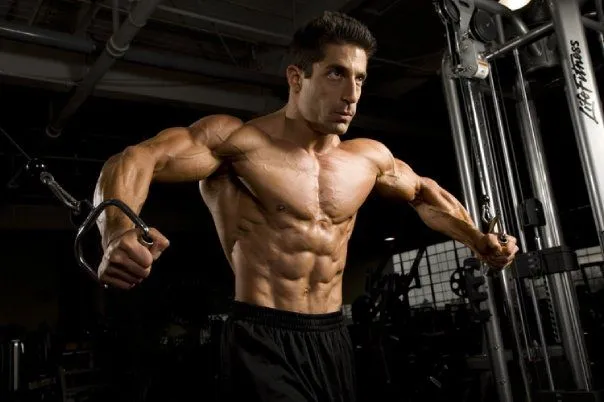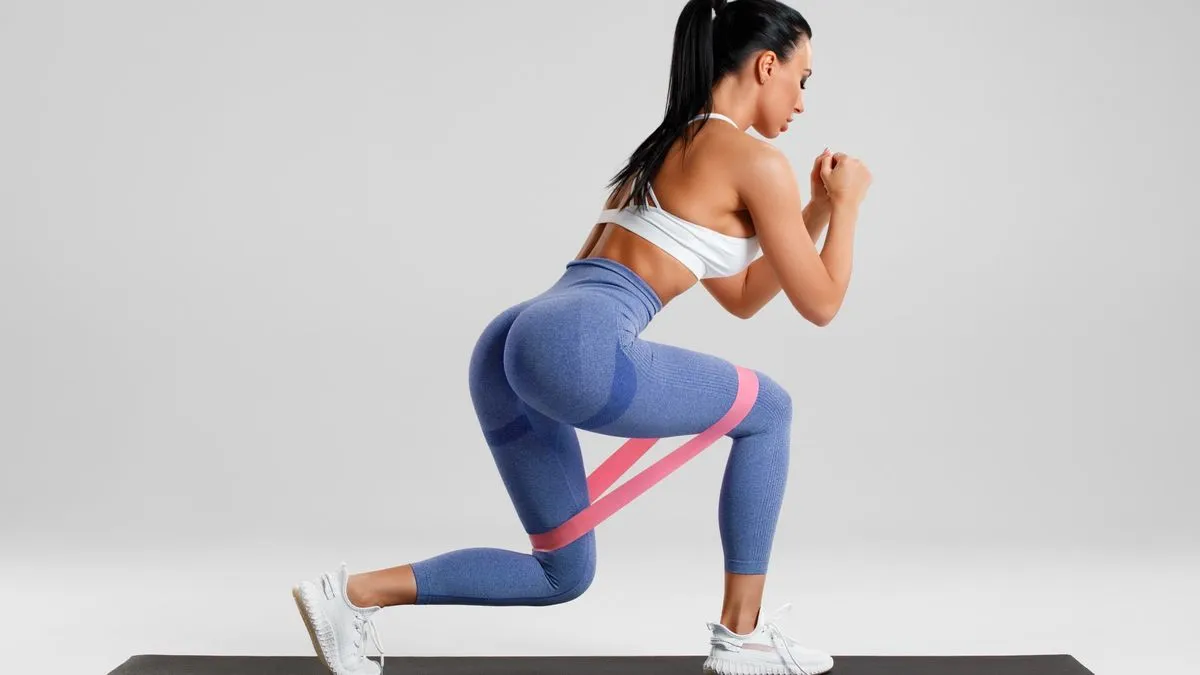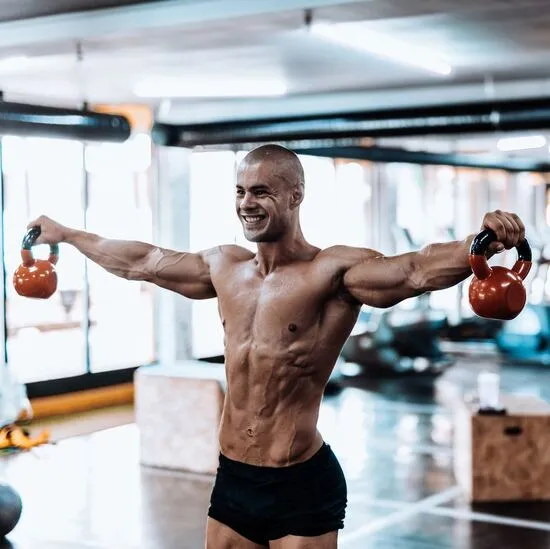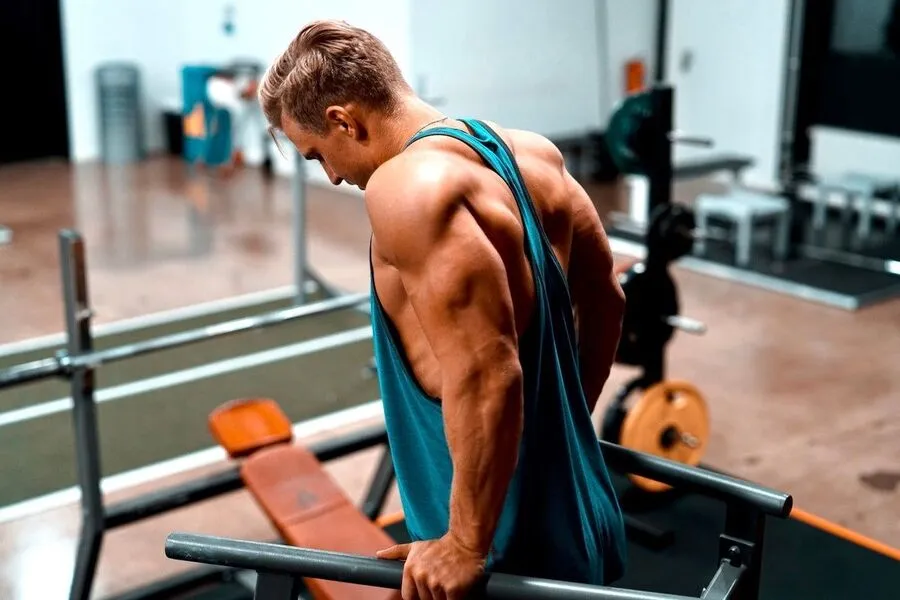Best Ab Workouts: Build Real Core Strength and Visible Six-Pack
May 14, 2025
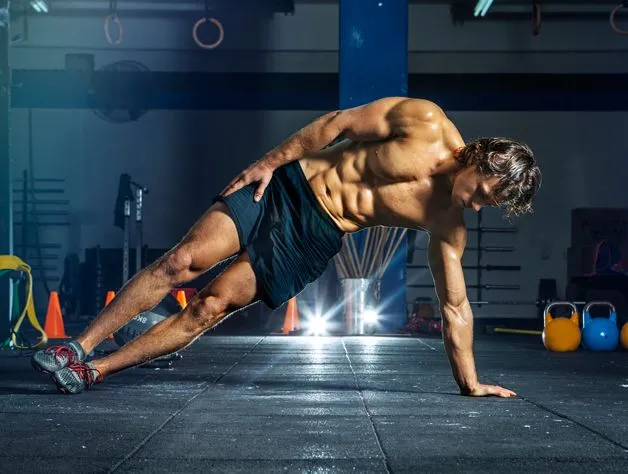
Strong abs are more than just a cosmetic goal. A solid core improves posture, protects the spine, and powers nearly every movement. From lifting weights to walking up stairs. While it's easy to focus on visible muscles like the biceps or glutes, abdominal strength often plays a more crucial role in day-to-day function and athletic performance. Core muscles stabilize the body, support balance, and help transfer force efficiently between the upper and lower body.
Ab training is also more complex than it seems. Crunches alone won’t cut it. To target the full range of abdominal muscles; including the rectus abdominis, obliques, and deep transverse abdominis, you need a mix of movements. That includes exercises for stability, rotation, and lower ab engagement. This is especially true if you're chasing definition or trying to prevent lower back pain.
Workout goals vary. The best ab workouts for men often focus on definition and strength, while the best ab workouts for women may emphasize function, core control, and pelvic stability. But both benefit from smart programming. Similarly, the best lower ab workout looks very different from an oblique-focused session. A well-rounded core routine addresses all these zones with targeted, intentional movements.
In this guide, you'll find ab exercises broken down by specific needs. Whether you're training at home, building a stronger foundation for compound lifts, or just want to feel more in control of your midsection, these are the core moves worth doing. Some require no equipment at all. Others add resistance or challenge your balance. All of them work, if you do them right.
Ab Workout Types and Training Focus
Best Ab Workouts for Men
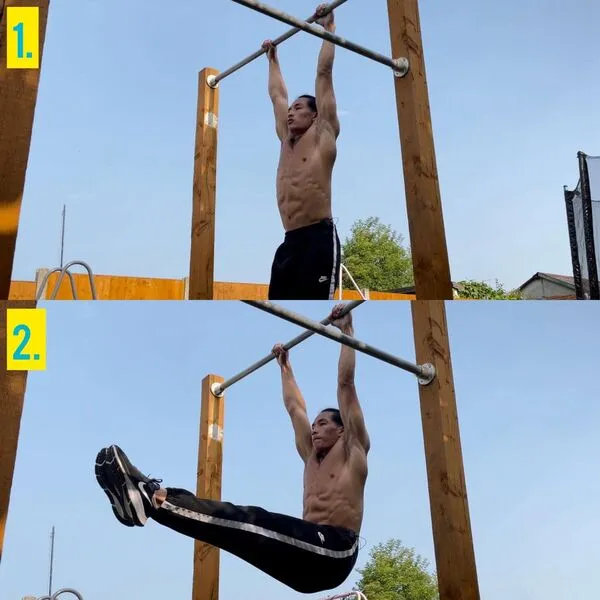
Men often focus on ab training to build visible definition, especially in the upper and mid-section. But true core strength comes from hitting the abs from different angles and with varying intensity. The best ab workouts for men combine dynamic movements, stability exercises, and resistance-based training to build a stronger, more defined core.
This section focuses on exercises that help develop the rectus abdominis, the six-pack muscle while also training the deeper core for overall strength. These moves are particularly effective when paired with low body fat levels and consistent, well-rounded training.
Hanging Leg Raises
Hanging leg raises are one of the most effective lower ab exercises, but they also hit the entire front of the core. The movement requires a pull-up bar or dip station with handles. By lifting your legs while hanging from your arms, your abs work harder to stabilize the pelvis and control momentum, which activates deeper core muscles that standard crunches miss.
To perform this exercise, hang from a bar with your arms straight and your legs extended. Keeping your core tight, raise your legs slowly to a 90-degree angle or higher. Avoid swinging or using momentum. Lower your legs under control. This creates intense tension in the lower abs and also challenges grip and shoulder stability.
Hanging leg raises are excellent for men aiming to carve out deep abdominal cuts. They're more advanced than floor-based movements, but for those who can perform them with good form, the payoff is significant. If you're just starting, bent-knee raises are a good stepping stone.
Ab Rollouts
Ab rollouts are often overlooked, but they’re among the best total-core exercises for men. This movement works the rectus abdominis, obliques, and the deep transverse abdominis simultaneously. It's a powerful way to train anti-extension. The ability of your core to resist arching which is essential for spine health and strength in compound lifts like squats and deadlifts.
Using an ab wheel or a barbell with plates, start on your knees with the roller under your shoulders. Slowly roll forward, keeping your hips tucked and your back flat. Go as far as your core allows without sagging, then pull back to the start. The further you roll, the harder the exercise becomes.
Men benefit from ab rollouts because they train both form and function. Not only do they challenge the visible abs, but they also build the deep core strength needed for powerful lifting and athletic movement.
Weighted Cable Crunches
Weighted cable crunches are one of the most effective exercises for building thick, defined upper abs. Unlike bodyweight crunches, they allow you to progressively overload your core with resistance. This makes them especially useful for men looking to develop visible six-pack muscles, since added resistance helps increase abdominal mass over time.
To perform this movement, use a high pulley cable machine with a rope attachment. Kneel facing the machine, holding the rope behind your neck or at shoulder level. Keep your hips stationary and contract your abs to pull your torso downward. The goal is to flex the spine using your abs not the hips so focus on bringing your elbows toward your knees while rounding your back slightly.
Weighted cable crunches are a smart choice because they mimic the spinal flexion that directly targets the rectus abdominis, while giving you the ability to scale difficulty. They're also easy to track and progress, which is ideal for men training with hypertrophy in mind. For best results, use moderate to heavy weight and strict form, avoiding momentum or hip drive.
Best Ab Workouts for Women
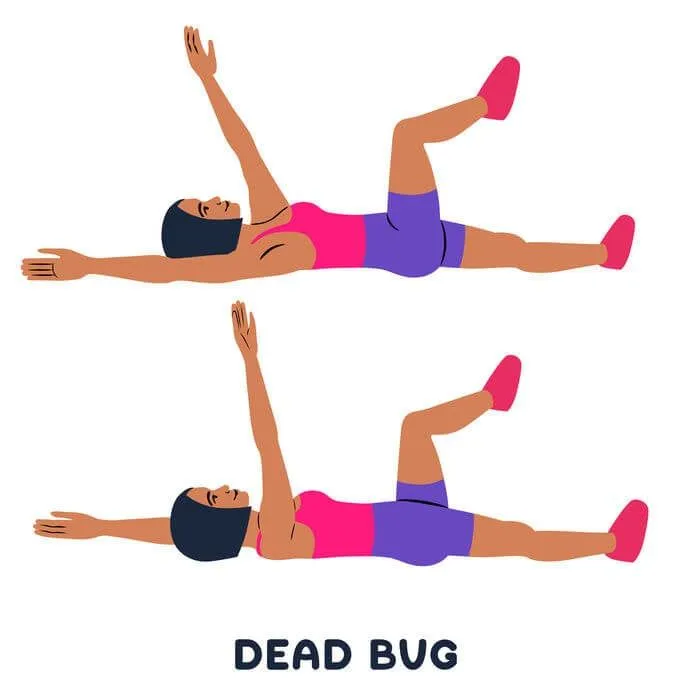
Core training for women often focuses on strength, stability, and tone without adding unwanted bulk. But that doesn't mean light movements or endless crunches. The best ab workouts for women target the full core, including deep stabilizers and the obliques, while supporting overall posture and pelvic alignment. These exercises are also helpful for functional strength and balance, which are essential for everything from daily tasks to lifting in the gym.
A strong core contributes to better athletic performance and helps prevent lower back discomfort. These exercises are chosen to support core strength while also promoting definition and symmetry. Whether you're training at home or in the gym, these movements deliver results without requiring advanced equipment or complex setups.
Dead Bug
The dead bug is a deceptively simple core exercise that builds deep stability without strain on the lower back. It targets the transverse abdominis, the deep muscle layer that acts like a natural corset. For women focused on safe and effective core activation, especially post-pregnancy, the dead bug is a top choice.
Lie on your back with your arms extended toward the ceiling and knees bent at 90 degrees. Slowly lower your right arm and left leg toward the floor while keeping your lower back pressed into the ground. Return to the starting position and repeat on the opposite side. Move slowly and avoid arching your back.
What makes the dead bug valuable is how it teaches control. It strengthens your core while reinforcing the connection between your breath, spine, and movement. It’s ideal for beginners and anyone looking to reset their core engagement patterns.
Glute Bridge March
Although it targets the glutes primarily, the glute bridge march is an excellent indirect core builder, especially for the lower abs and pelvic stabilizers. For women looking to tone the midsection while improving hip strength and balance, this is a smart addition to any routine.
Start by lying on your back with knees bent and feet flat on the floor. Lift your hips into a bridge position. From there, alternate lifting each foot off the ground, keeping the hips level. Engage the core to prevent any rocking or dropping of the pelvis.
This movement strengthens the posterior chain while teaching the abs to resist rotation and extension. It’s particularly useful for those who experience back discomfort during traditional ab exercises or want a more holistic approach to core training.
Side Plank with Reach-Through
The side plank with reach-through is one of the best ab workouts for women looking to sculpt the waistline while improving stability. It targets the obliques, transverse abdominis, and shoulder stabilizers all at once. This move is particularly effective for building rotational control, which supports spine health and improves athletic movement.
Begin in a side plank position with your elbow under your shoulder and your top arm extended toward the ceiling. From this position, rotate your torso slightly and reach the top arm under your body, as if threading it through. Pause, then return to the start with control. Keep your hips elevated throughout the movement to maintain full tension on the obliques.
What sets this movement apart is its combination of static and dynamic tension. It strengthens the sides of the core while training movement control, which is useful for everything from yoga to weightlifting. It’s a versatile and equipment-free way to challenge the core in a balanced, controlled way.
Best Lower Ab Workout
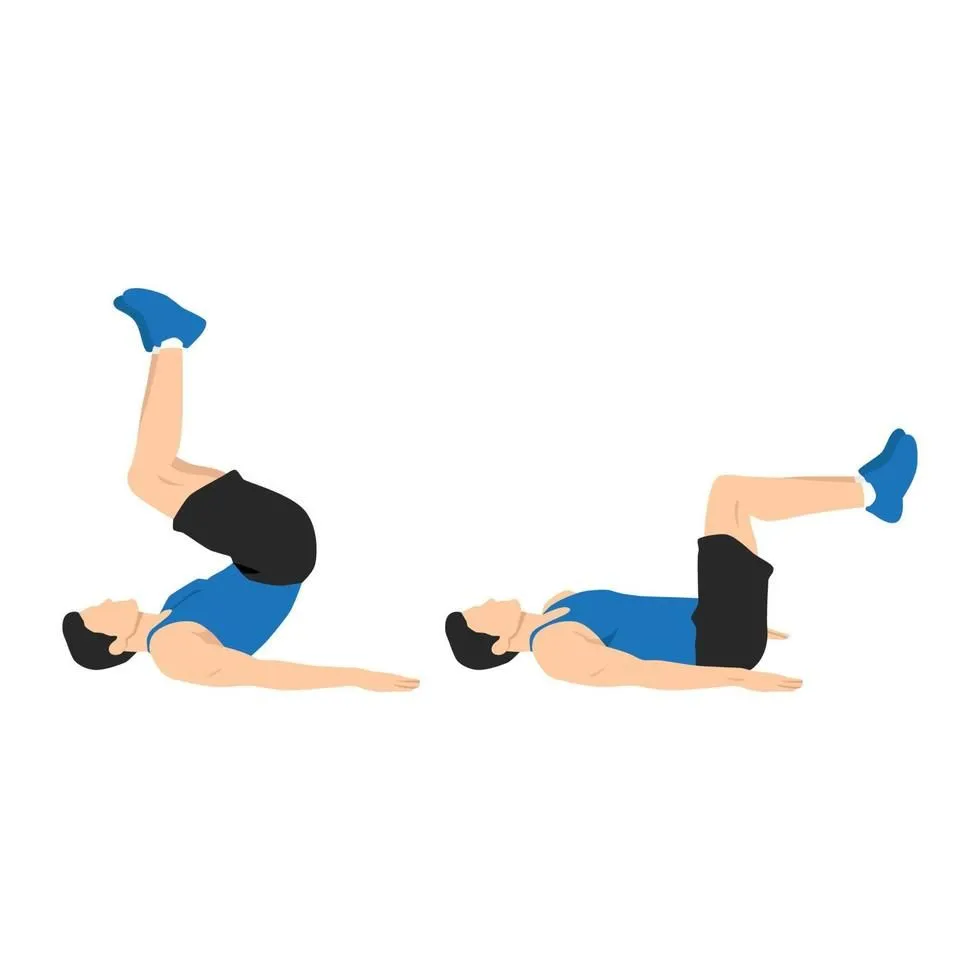
Lower abs are often the hardest part of the core to train and the slowest to show definition. That’s because the lower portion of the rectus abdominis requires specific movements to activate properly, and many standard ab exercises tend to neglect this zone. The best lower ab workout includes exercises that lift the pelvis and challenge the lower core without placing strain on the lower back.
This section focuses on precise, controlled movements that activate the lower abdominal wall. Whether you’re aiming for a flatter lower belly, more definition, or stronger hip control, these exercises are essential. They’re also helpful for reducing low back discomfort and improving core alignment.
Reverse Crunch
The reverse crunch is a go-to move for lower ab activation. Unlike traditional crunches, which focus on lifting the shoulders, the reverse crunch lifts the hips, bringing the lower abs into the spotlight. It’s a compact but powerful exercise that works well for both beginners and advanced users.
Lie on your back with your legs bent and feet off the floor. Place your hands by your sides for support. Contract your abs to lift your hips off the ground, bringing your knees toward your chest. Focus on curling the spine rather than swinging the legs. Lower slowly with control.
The reverse crunch strengthens the lower abdominal region while minimizing strain on the neck and upper back. For best results, move slowly and keep tension throughout the motion. It’s especially useful for sculpting the lower ab line that’s often the hardest to define.
Leg Raises on Floor
Floor leg raises are a classic and highly effective exercise for targeting the lower abs. They isolate the lower portion of the rectus abdominis by forcing the core to control the weight of the legs as they move up and down. When performed correctly, this movement builds strength, definition, and core control without any equipment.
To begin, lie flat on your back with your legs extended and arms at your sides or under your hips for support. Keep your lower back pressed into the floor as you slowly raise your legs to a 90-degree angle. Pause briefly at the top, then lower your legs slowly until they’re just above the ground without letting them touch. Maintain core tension throughout.
Leg raises on the floor are one of the best lower ab workouts for both men and women. They require precision, not speed. By keeping the back flat and moving with control, you avoid hip flexor dominance and place the work where it matters most, on the lower abs. This exercise also builds the foundation for more advanced moves like hanging leg raises or V-ups.
Best Oblique Ab Workouts
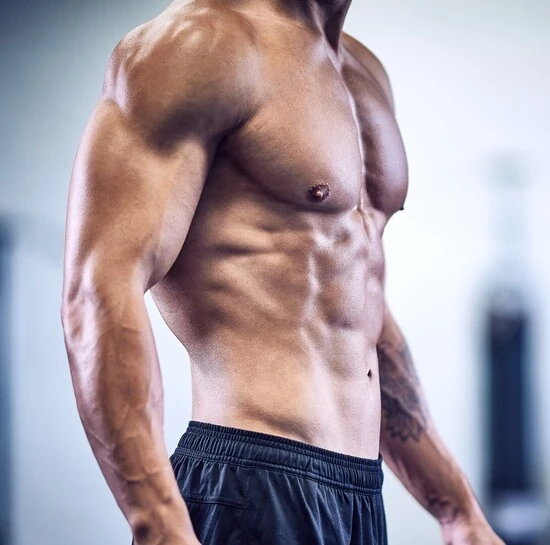
Obliques are the muscles that run along the sides of your core. They play a key role in rotation, lateral flexion, and overall core stabilization. Strong obliques support spinal health, improve posture, and help define the waistline. The best oblique ab workouts combine rotational and anti-rotational movements to build strength, control, and visual separation between the upper and lower body.
This section focuses on exercises that engage the internal and external obliques through dynamic motion and core bracing. Whether you're aiming for a smaller waist, more power in your lifts, or better balance in sports, these moves are essential.
Russian Twists
Russian twists are a staple for building rotational strength in the obliques. They work by challenging the core to twist under control while maintaining stability through the hips and spine. This movement helps define the sides of the waist and builds coordination between the upper and lower body.
Sit on the floor with your knees bent and feet flat. Lean back slightly, keeping your spine straight. Hold a weight or medicine ball in your hands. Rotate your torso to one side, then the other, tapping the weight to the floor each time. For more intensity, lift your feet off the ground to increase core demand.
Russian twists are one of the best ab workouts for building visible oblique definition. They train your core to resist uncontrolled rotation, which is especially useful in sports or lifting. Just be sure to move with control and keep your spine neutral throughout the exercise.
Side Plank Hip Lifts
Side plank hip lifts are a highly effective way to strengthen the obliques while also building total-body stability. This exercise combines static tension with controlled movement, making it ideal for targeting the lateral core muscles. It not only defines the waistline but also improves shoulder stability and glute engagement.
Start by getting into a side plank position with your elbow under your shoulder and feet stacked or staggered for balance. From this position, slowly lower your hip toward the ground, then lift it back to the top of the plank position. Keep your body in a straight line and your core tight throughout. Perform all reps on one side, then switch.
Side plank hip lifts are one of the best oblique ab workouts for developing strength and endurance in the side body. They teach your core to resist lateral movement while still allowing controlled flexion. This makes them perfect for athletic training, injury prevention, and visual definition in the waist area. Plus, they require no equipment and can be done anywhere.
Best Ab Workouts at Home
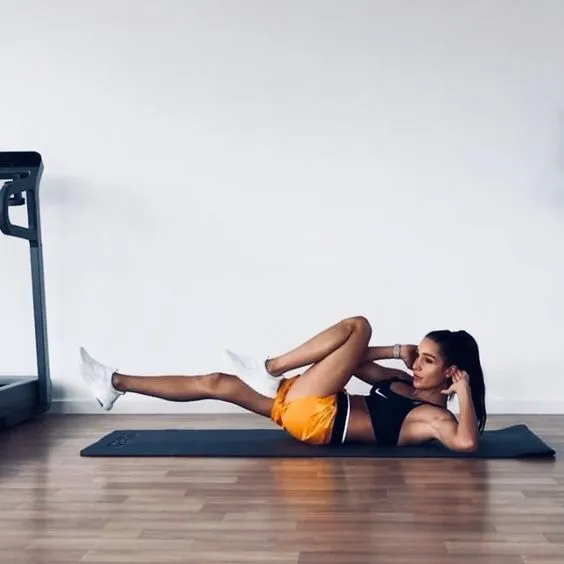
Training your core at home doesn’t require expensive equipment or a gym membership. In fact, some of the most effective ab workouts can be done with just your body weight. The best ab workouts at home focus on control, consistency, and using simple movements that activate all parts of the core; upper abs, lower abs, obliques, and deep stabilizers.
This section includes exercises that fit into tight schedules and small spaces. Whether you're a beginner or already experienced, these home-friendly moves will help you build strength, definition, and endurance using nothing more than your floor and focus.
Plank to Shoulder Tap
Plank to shoulder tap is a full-core movement that adds dynamic stability training to the standard plank. It forces your abs, especially the obliques and deep core muscles, to resist rotation as you move one arm at a time. This makes it an ideal bodyweight ab exercise for training at home with no equipment.
Start in a high plank position with your hands under your shoulders and your feet hip-width apart. Keeping your hips steady, lift one hand to tap the opposite shoulder, then return it to the ground. Alternate sides, moving slowly and with control. Focus on preventing your torso from swaying.
This exercise strengthens the core while also improving shoulder stability and coordination. It’s one of the best ab workouts at home because it hits multiple muscle groups at once, encourages balance, and scales easily for different fitness levels.
Bicycle Crunches
Bicycle crunches are one of the most effective bodyweight exercises for targeting the entire abdominal wall, especially the obliques and lower abs. Their twisting motion engages both sides of the core while also challenging coordination and balance. For anyone looking to train abs at home without equipment, this is one of the top exercises to include.
Lie flat on your back with your hands behind your head and legs raised, knees bent at a 90-degree angle. Begin by bringing your right elbow toward your left knee while extending the right leg straight. Then switch sides in a pedaling motion. Keep the movement controlled and avoid pulling on your neck. Focus on twisting through the torso, not just the elbows.
Bicycle crunches rank among the best ab workouts at home because they require no tools yet deliver high engagement across multiple core areas. They help define the waistline, strengthen rotational control, and build endurance. To maximize their benefits, perform them slowly and with a focus on deliberate core contraction.
Best Ab Workouts Without Equipment
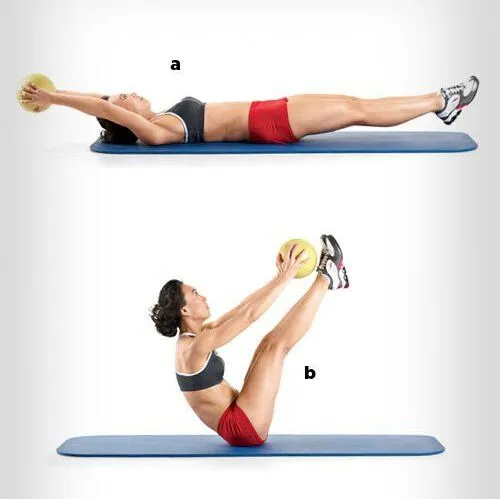
You don’t need a gym, a mat, or even a single piece of gear to train your core effectively. The best ab workouts without equipment rely on controlled bodyweight movements that target the abs from multiple angles. These exercises use gravity and positioning to create resistance, making them ideal for beginners, frequent travelers, or anyone working out at home.
What makes bodyweight core training unique is how it builds strength while improving balance, posture, and control. These exercises focus on movement quality and core engagement, not how much weight you can move. They’re scalable, versatile, and can be done just about anywhere.
V-Ups
V-ups are a powerful full-core exercise that targets both the upper and lower abdominals in one explosive movement. They require no equipment but deliver a high level of muscular engagement. This move is perfect for building strength, coordination, and midsection definition.
Start by lying flat on your back with your legs extended and arms stretched overhead. Engage your core to lift your legs and torso simultaneously, reaching your hands toward your feet to form a "V" shape at the top. Slowly lower back to the starting position while keeping control and tension through the abs.
V-ups are one of the best ab workouts without equipment because they recruit the entire abdominal wall in one motion. They challenge flexibility, control, and power at once. To scale down, bend the knees slightly or perform tuck-ups until your strength improves.
Mountain Climbers
Mountain climbers are a fast-paced, bodyweight ab exercise that works the entire core while also elevating your heart rate. This movement combines elements of cardio and stability, making it ideal for fat loss and abdominal definition. Because it requires no equipment, it’s one of the best ab workouts without equipment you can do anywhere, anytime.
Begin in a high plank position with your hands directly under your shoulders and your body in a straight line. Drive one knee toward your chest, then quickly switch legs in a running motion. Keep your hips level and your core engaged throughout to avoid bouncing or sagging.
Mountain climbers activate the rectus abdominis, obliques, and hip flexors while also strengthening your shoulders and arms. Their versatility and intensity make them a go-to move for anyone looking to burn fat and train their core effectively without needing gym access or gear. For best results, focus on speed, form, and consistency over long sets or circuits.
Best Ab Workouts for Beginners
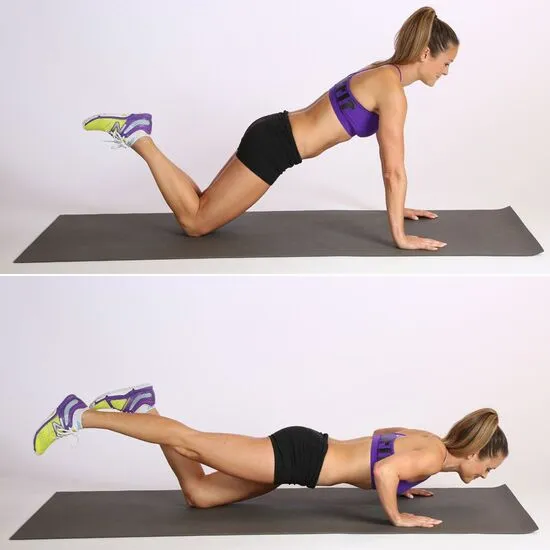
Starting ab training can feel overwhelming, especially with so many advanced exercises promoted online. But the best ab workouts for beginners focus on control, body awareness, and building a solid foundation. These movements teach you how to engage your core correctly without straining your neck or lower back, which is key for long-term progress.
Beginner-friendly ab exercises prioritize stability over speed and emphasize proper form. They’re designed to help new exercisers feel their abs working and learn how to brace the core during movement. These routines require little to no equipment and are easy to modify based on comfort and ability.
Modified Plank
The modified plank is a gentler version of the standard plank, ideal for those who are new to core training or building back strength after a break. It activates the entire abdominal wall, including the deep stabilizers that protect the spine and improve posture. By starting with this variation, beginners can learn how to maintain alignment and control.
Begin on your forearms and knees, keeping your elbows under your shoulders. Tighten your core, glutes, and legs to create a straight line from head to knees. Hold this position while breathing evenly, keeping your hips from sagging or rising.
This is one of the best ab workouts for beginners because it builds strength and awareness without adding unnecessary strain. As your core gets stronger, you can progress to a full plank position or extend your hold time for added challenge. The goal is to master tension and control, not just duration.
Toe Taps
Toe taps are a controlled, low-impact ab exercise that helps beginners develop strength in the lower core while maintaining a neutral spine. This move is gentle on the back and easy to learn, yet highly effective for building foundational core stability. It’s often used in physical therapy and beginner programs to improve lower abdominal activation without risk of strain.
Lie flat on your back with your legs lifted, knees bent at 90 degrees, and shins parallel to the floor. Brace your core to keep your lower back gently pressed into the mat. Slowly lower one foot toward the floor, tap it lightly, then return to the starting position. Alternate legs in a slow, controlled rhythm, keeping your abs tight the entire time.
Toe taps are among the best ab workouts for beginners because they teach how to stabilize the pelvis while isolating the lower abs. They’re especially useful for those recovering from injury or anyone learning how to control movement through the core. As your strength improves, this move can be progressed into more advanced variations like leg lowers or reverse crunches.
Best Ab Workouts for Strength and Stability
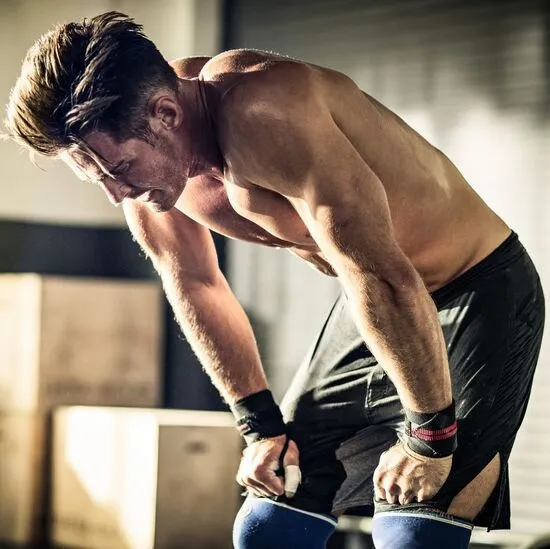
Ab workouts are not just about visible definition. True core strength involves controlling movement, resisting unwanted motion, and stabilizing the spine under load. The best ab workouts for strength and stability focus on exercises that challenge your core to brace, balance, and support your entire body. These movements carry over into every major lift and protect you during everyday tasks like bending, twisting, or carrying weight.
This section includes advanced bodyweight and weighted movements that build deep core resilience. These exercises don’t rely on crunches. They build real strength that supports performance, posture, and injury prevention.
Pallof Press
The Pallof press is a powerful anti-rotation exercise that trains your core to resist twisting under tension. It targets the transverse abdominis and obliques, improving both stability and balance. Unlike traditional crunches, the Pallof press builds strength by preventing movement rather than creating it.
To perform it, attach a resistance band to a sturdy anchor at chest height. Stand perpendicular to the anchor and hold the band with both hands at your chest. Press the band straight out in front of you, keeping your core tight to prevent your torso from rotating. Hold briefly, then return to the starting position. Repeat for reps, then switch sides.
This move is one of the best ab workouts for strength and stability because it mimics the demands placed on your core during lifting, running, and everyday movement. It teaches you how to control force through your midsection. Something that crunches and sit-ups can’t offer.
Body Saw
The body saw is a dynamic plank variation that targets the entire core, especially the deep stabilizing muscles responsible for strength and control. It builds tension across the abs, obliques, and lower back while also challenging shoulder and glute stability. This makes it one of the best ab workouts for strength and stability, especially for athletes or those progressing beyond static holds.
Start in a forearm plank position with your elbows under your shoulders and your body in a straight line. From here, gently rock your body forward and backward by pushing from your toes, keeping your hips level and your abs tight. The key is to maintain core tension throughout the movement without letting your back sag or your hips rise.
The body saw improves anti-extension strength, the ability to prevent the spine from arching under load. This is critical for protecting your back during heavy lifts and building a core that supports real-world movement. It's more challenging than a basic plank but offers greater returns in terms of functional core development.
Stronger Abs, Smarter Training
Building a strong core goes far beyond chasing visible abs. The best ab workouts target not just the front of the stomach but also the deep muscles that control movement, protect the spine, and support athletic performance. Whether your goal is to achieve a defined six-pack, improve posture, or simply move with more confidence, consistent ab training delivers long-term results.
From bodyweight basics to advanced stability drills, this guide covered the best ab workouts for men, women, beginners, and beyond. We explored targeted routines for lower abs, obliques, and full-core strength. All without relying on complicated equipment. These exercises aren't just efficient, they’re functional, helping you lift better, move better, and feel more connected to your body.
Incorporating just a few of these movements into your weekly routine can make a noticeable difference. Progress starts with intention, not intensity. With the right approach and consistency, you can build core strength that supports everything you do—whether it’s lifting weights, running a mile, or simply standing taller.

